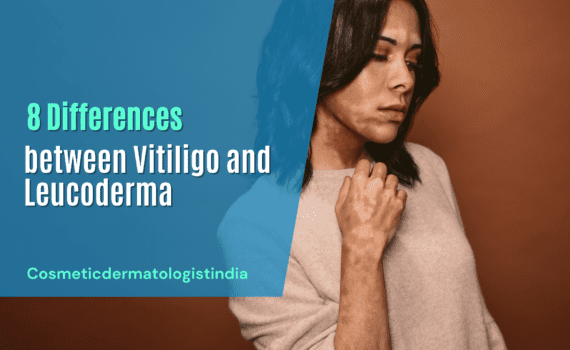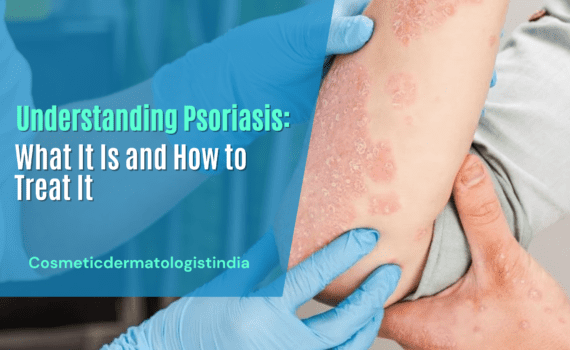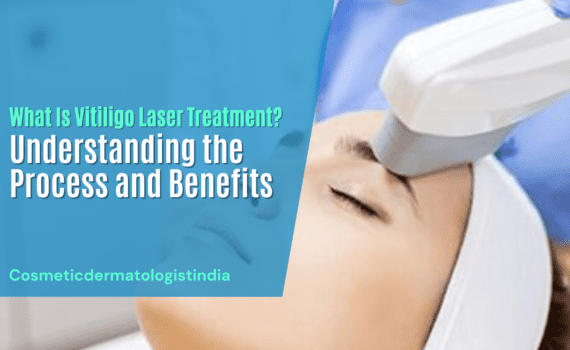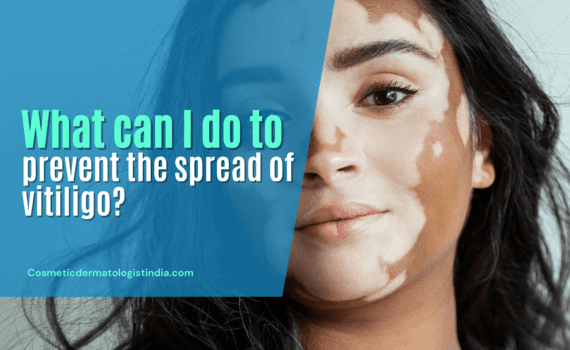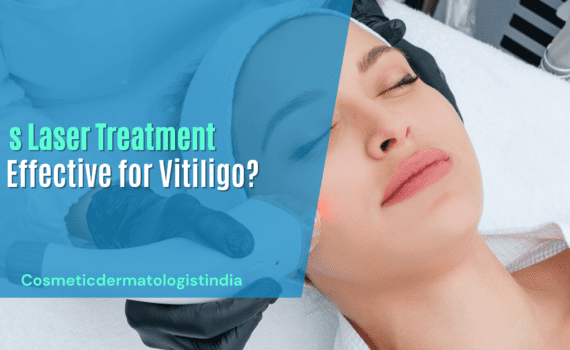
Is Laser Treatment Effective for Vitiligo?
Vitiligo is a skin condition that causes pale white or light coloured patches to develop on the skin. This condition can affect anyone at any age irrespective of their gender, ethnicity and location. Vitiligo can affect any area of the body and is most common in face, neck, hands, back and the areas with creases. There is no one trusted cure for vitiligo but laser treatment among the many treatment options for vitiligoin Mumbai has emerged as an effective treatment to even out the skin tone of the patient and restore the lost colour.
What is vitiligo?
The autoimmune system of the body is supposed to recognized the foreign bodies and fight their invasion. But when this autoimmune system starts seeing the melanocytes( pigments that give the body its colour) as a foreign object and starts attacking them, the skin become discoloured and patches form on the surface.
There is still a mystery about what causes vitiligo. The most common theories about the causes of vitiligo include genetics (20%), autoimmune response, oxidate stress and environmental factors such as emotional upheaval, sun burn, chemical exposure. Many people suffering from the depressing skin condition also suffer from one or more autoimmune conditions such as hypothyroidism, alopecia areata, IBD and rheumatoid arthritis. People suffering from vitiligo are also at a high risk of other autoimmune conditions such as Addison’s disease.
The most common and the only symptom of vitiligo is a pale patch on the skin. it starts as a light coloured flat spots on the skin (mostly on the areas that are more exposed to sun). the spots become white and increase in size. Sometimes the edges of the spots can become red and cause itchiness. These patches do not have a defined shape or size.
Types of vitiligo
In some the vitiligo patches are small and do not spread but in others they can spread to large white patches that eventually join together and cover a large area of skin. The different types of vitiligo are
Non segmental vitiligo
In this type of skin condition, the white patches are symmetrical at fist and they spread slowly if the condition is visible in only one body area. This is the most common type of vitiligo. The patches are symmetrical and on both sides of the body. The patches appear on arms, eyes, back of the hands, knees, elbows, feet, mouth, armpit, nose, naval, genitals and groin area. this type of vitiligo is further classified into sub categories such as generals, acrofacial, mucosal, universal and focal depending on the location, size and intensity of the vitiligo.
Segmental vitiligo
This is a more intense kind of vitiligo and spreads fast. It is stable but less common and contains itself to one body area. Segmental vitiligo can be treated with topical treatments since it usually accepts the areas of the skin that has nerves attached to it.
Laser treatment for Vitiligo
Vitiligo treatment in Mumbai using lasers has emerged as top preference by doctors and patients alike because it is non-surgical, not painful and has show quite effective results as compared to other treatment options. Also, vitiligo surgery cost in India is much more than vitiligo laser treatment cost in India and hence lasers remain the preferred option by most people. Lasers work by restoring the lost colour on the skin and impair the autoimmune disorder to from causing more skin depigmentation.
Lasers are an effective treatment option because it can target a diversity of signs of vitiligo. Different types of laser treatments along with a treatment course are used depending on the skin type of the patient and the condition of vitiligo. Among the types of lasers Excimer lasers and Narrow band ultraviolet B lasers are the most popular ones.
Excimeror XTRAC lasers
This is the most common vitiligo treatment in Mumbai is the excimer lasers. This laser has proven effective in about 70% of the people who were treated with this with greater than 75% regimentation. This laser was first used for vitiligo treatment in the year 2001 and was FDA approved for treatment in 2007. The laser is a mono therapy laser and it emits a wavelength of 308nm.
- This UVB laser treatment is often combined with other topical inhibitors to get even hyperpigmentation.
- The photobiological effects of the Excimer laser do not affect the normal skin and only work on the depigmented lesions selectively
- This laser can be used on large and delicate areas of the skin safely such as ears and genitals.
- Excimer lasers are even effective on people who have not responded to topical creams or lotions.
- The best response of the laser is seen on face and lowest on hands and feet.
- XTRAC lasers can be used on children safely
To see the results, the patient needs a minimum of 20 excimer laser treatment sessions about 2-3 times per week. The downside to this laser is that the results can minimize or disappear in patients who stop the treatment before one year is over.
How does excimer laser work?
Though it is still under study, the scientists stand up the efficacy of excimer laser for vitiligo treatment in Mumbai. The laser works by enhancing the immune response and improve the production of more melanin producing melanocytes and their spread. This makes this laser the most effective in treatment of non-segmental vitiligo. It also helps with the cell death of T cells.
Treatment and Results
The treatment is done is in one, two or three times a weekly sessions in the doctor’s office. This is an outpatient procedure and each session lasts for about one hour. The pigmentation starts from the hair follicles. The re-pigmentation is more rapid with more frequent treatments and three sessions per week treatment.
The dermatologist uses the laser wand to move over the affected skin areas. There is no pain or discomfort during the procedure.
Side effects of Excimer laser for vitiligo treatment in Mumbai
- Some erythema
- Hyperpigmentation or darkening of skin
- Minor skin lesions.
Vitiligo laser treatment cost in Indiausing Excimer lasers is more cost effective than the surgical options. Ablative lasers are the preferred mode of treatment because they have less chances of scaring. Er:YAG lasers are using for site preparation for vitiligo laser treatments because there are less chances of burns, scaring and dyspigmentation. Other lasers used for vitiligo treatment in Mumbai are
- Fractional CO2 lasers
- Erb:YAG lasers to improve the repigmentation.
- Q-switched lasers for depigmentation of the skin but it is a temporary solution
- Ti: Sapphire lasers: these are sometimes used as an alternative to Excimer lasers.
Different types of lasers do different things for vitiligo treatment. For example, Fractional CO2 lasers can also reduce the size of the vitiligo lesions, whereas ablative lasers can be used to prepare the skin site for surgical grafting and to give a more even look to the skin depigmentation using Q‐switched lasers is the best option. Each type of laser has its benefits and risks and should be individually chosen based on location, extent, activity and type of vitiligo and the paying capacity of the patient.
Who can get a laser treatment for vitiligo
Any person who is suffering from vitiligo is wants a treatment can opt for phototherapy and laser treatments. The lasers work on all skin tones and people with all ages. The dermatologist will decide on which laser will suit which type of vitiligo.
Vitiligo laser treatment cost
The cost of vitiligo laser treatment in India can vary depending on several factors, such as the number of sessions required, the size of the affected area, the clinic or hospital you choose, and the city you are in. On average, the cost of a single session of vitiligo laser treatment can range from ₹2,000 to ₹10,000 or more.
There are different surgical procedures available for vitiligo, such as punch grafting, split-thickness skin grafting, and blister grafting. The cost of vitiligo surgery can depend on factors like the technique used, the size and location of the affected area, the surgeon’s expertise, the hospital or clinic, and the city you are in. The approximate cost of vitiligo surgery in India can range from ₹20,000 to ₹1,00,000 or more.
